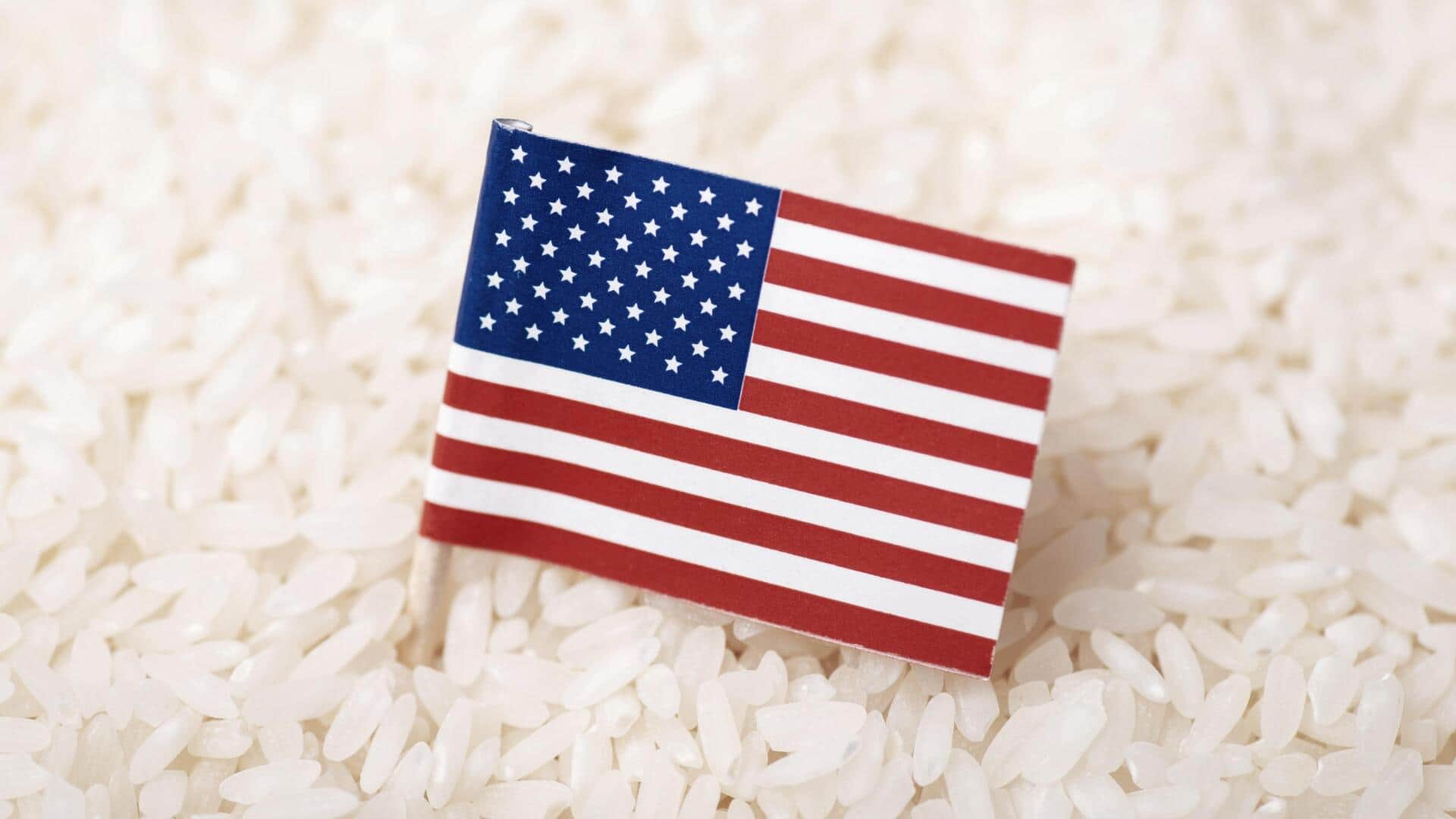
Why NRIs in US are hoarding rice
What's the story
Non-Resident Indians (NRIs) in the United States (US) were recently criticized for "rice hoarding" as they rushed to grocery stores to buy large quantities of rice, fearing a supply shortage and price hike. The panic buying wasn't restricted to just Indians, as other Asian communities also reportedly followed suit after India, the world's largest exporter of rice, banned the export of non-basmati white rice.
Ban
Rice ban likely to raise food prices globally
The ban enforced from Thursday has raised worries for Africa and Asia, along with the US, as it is expected to cause a spurt in food prices globally. Countries that rely on imported rice, such as the US, among others, are likely to struggle with ensuring a food supply while the burden shifts to other major rice-producing countries, such as Thailand and Vietnam.
Reason
Export ban to ensure availability, price stability in India
India's Ministry of Consumer Affairs, Food, and Public Distribution said the export ban was enforced to ensure adequate availability of non-basmati white rice and to allay the price rise in the domestic market. The ministry added that the domestic retail prices of rice increased by 11.5% over a year and by 3% over the past month alone.
Quantity
India's rice export jumped 35% in FY 2023-24
India exported around 33.66 lakh metric tons (LMT) of non-basmati white rice in September-March FY 2021-22 and 42.12 LMT in the same period in FY 2022-23. In comparison, India exported 15.54 LMT in April-June FY 2023-24 alone—up 35% from 11.55 LMT in April-June FY 2022-23. The jump was attributed to high international prices amid geopolitical tensions and extreme climatic conditions in other rice-producing countries.
Why
Why rice production suffered in India
Rice production in India suffered due to unexpected weather conditions, such as extreme rainfall in northern rice-producing states against a rain deficit in other parts of the country. Floods in Haryana and Punjab, along with parts of other states, ruined newly planted crops, and farmers were forced to replant. In other states, inadequate rains have hindered the transplantation of paddy seedlings from nurseries.
Importers
Countries that are likely to be hurt most
India accounts for more than 40% of global rice shipments; non-basmati rice constitutes 25% of the total rice exported from India. African nations, Pakistan, Syria, and Turkey, among other countries, are expected to be impacted the most as these nations are already battling high food price inflation. Benin, Senegal, Ivory Coast, Togo, Guinea, Bangladesh, and Nepal are among the top buyers of Indian rice.
Quip
Americans hoarded toilet paper during pandemic: Social media users
Reacting to reports of rice hoarding, social media users compared the situation to people in the US stockpiling toilet paper during the COVID-19 pandemic. Rice reportedly has over three billion consumers in the world, and nearly 90% of rice, a water-intensive crop, is produced in Asia. Rice is a staple food for most Indians as well as in many other Asian countries.
Twitter Post
'Hoarding isn't race specific'
To all those belittling Indians in the US for hoarding up on rice bags - remember the rush for toilet paper during Covid?
— Aditya (@vizagobelix) July 22, 2023
Those were Americans.
Hoarding isn't race-specific.
It is an unfortunate instinct all humans are born with.
Why are we so keen to denigrate ourselves? 🤷🏻♂️🤦🏻♂️
Poll